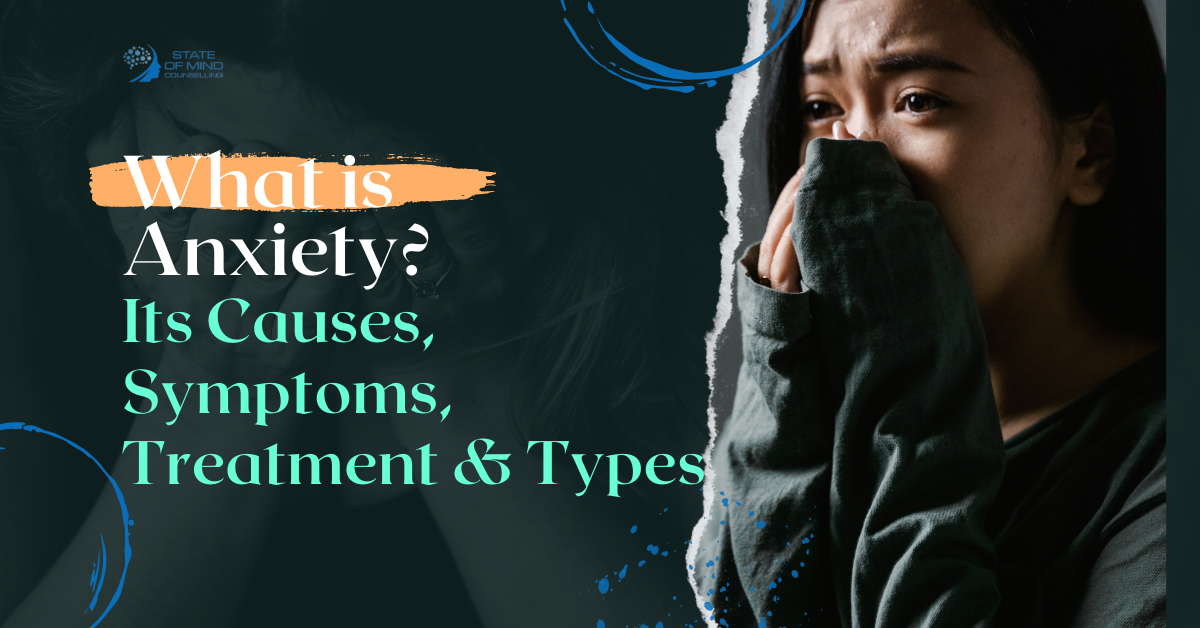Anxiety is a common mental health condition that affects millions of people worldwide. While feeling anxious from time to time is a normal response to stress, persistent or excessive anxiety can interfere with daily life and well-being. Understanding anxiety, its causes, symptoms, and treatment options can help individuals seek the support they need.
What is Anxiety?
An anxiety disorder is a mental health condition that affects how you respond to certain situations. If you have an anxiety disorder, you may experience intense fear or dread, along with physical symptoms like a racing heart and excessive sweating.
Feeling anxious from time to time is normal, especially when facing challenges such as work-related problems, job interviews, exams, or important decisions. In some cases, anxiety can even be helpful, as it heightens awareness of potential dangers and improves focus.
However, an anxiety disorder goes beyond occasional nervousness or mild fear. It becomes a concern when:
- Anxiety disrupts your daily life and ability to function.
- Your reactions to situations are disproportionate.
- You struggle to control your anxious responses.
Anxiety disorders can affect people of all ages, including children, teenagers, and adults. Women are nearly twice as likely as men to experience them.
While anxiety disorders can make daily life challenging, effective treatments are available to help manage symptoms and improve well-being.
Causes of Anxiety
Several factors contribute to anxiety disorders, including:
- Genetics – A family history of anxiety can increase the risk of developing the condition.
- Brain Chemistry – Imbalances in neurotransmitters, such as serotonin and dopamine, can influence anxiety levels.
- Environmental Factors – Stressful life events, trauma, or abuse can trigger anxiety.
- Medical Conditions – Chronic illnesses, hormonal imbalances, or substance use can contribute to anxiety.
- Personality Traits – Individuals who are highly self-critical or perfectionistic may be more prone to anxiety.
Common Symptoms of Anxiety
Anxiety manifests in various ways, including:
- Excessive worrying
- Restlessness or feeling on edge
- Difficulty concentrating
- Rapid heartbeat or palpitations
- Sweating and trembling
- Shortness of breath
- Insomnia or trouble sleeping
- Gastrointestinal issues
Types of Anxiety Disorders
Anxiety disorders can take different forms, such as:
- Generalized Anxiety Disorder (GAD) – Persistent and excessive worry about everyday situations.
- Panic Disorder – Sudden and intense episodes of fear (panic attacks) accompanied by physical symptoms like chest pain and dizziness.
- Social Anxiety Disorder – Fear of social situations and interactions.
- Obsessive-Compulsive Disorder (OCD) – Unwanted, intrusive thoughts (obsessions) and repetitive behaviors (compulsions).
- Post-Traumatic Stress Disorder (PTSD) – Anxiety following a traumatic event.
- Phobias – Intense fears of specific objects, situations, or activities.
Anxiety Treatment Options
Managing anxiety involves a combination of therapies and lifestyle changes, including:
- Cognitive-Behavioral Therapy (CBT) – Helps individuals identify and change negative thought patterns.
- Medication – Antidepressants, anti-anxiety drugs, or beta-blockers may be prescribed for symptom management.
- Lifestyle Modifications – Regular exercise, a balanced diet, and adequate sleep can reduce anxiety.
- Mindfulness and Relaxation Techniques – Practices like meditation, deep breathing, and yoga can help regulate emotions.
- Support Groups – Connecting with others who experience anxiety can provide comfort and encouragement.
How Common Are Anxiety Disorders?
Anxiety disorders are among the most prevalent mental health conditions:
- Specific phobias affect up to 12% of the U.S. population.
- Social anxiety disorder impacts approximately 7% of people in the U.S.
- Generalized anxiety disorder affects around 3% of the population.
- Agoraphobia occurs in up to 1.7% of individuals.
- Separation anxiety disorder affects about 4% of children, 1.6% of adolescents, and up to 1.9% of adults.
- Selective mutism is the least common anxiety disorder, impacting 0.47% to 0.76% of the U.S. population.
Seeking Help from State of Mind Counselling
If you or someone you know is struggling with anxiety, professional support can make a significant difference. At State of Mind Counselling, we provide compassionate, evidence-based therapy tailored to your unique needs. Our experienced counsellors help clients navigate their anxiety, develop coping strategies, and regain control over their lives.
Don’t let anxiety hold you back, reach out to us today for anxiety treatment and take the first step toward a calmer, healthier state of mind.
Final Thoughts
Anxiety is a manageable condition with the right support and treatment. Recognizing the signs and seeking professional help can lead to significant improvements in mental health and overall well-being. If you or a loved one is experiencing anxiety, know that help is available, and recovery is possible.

